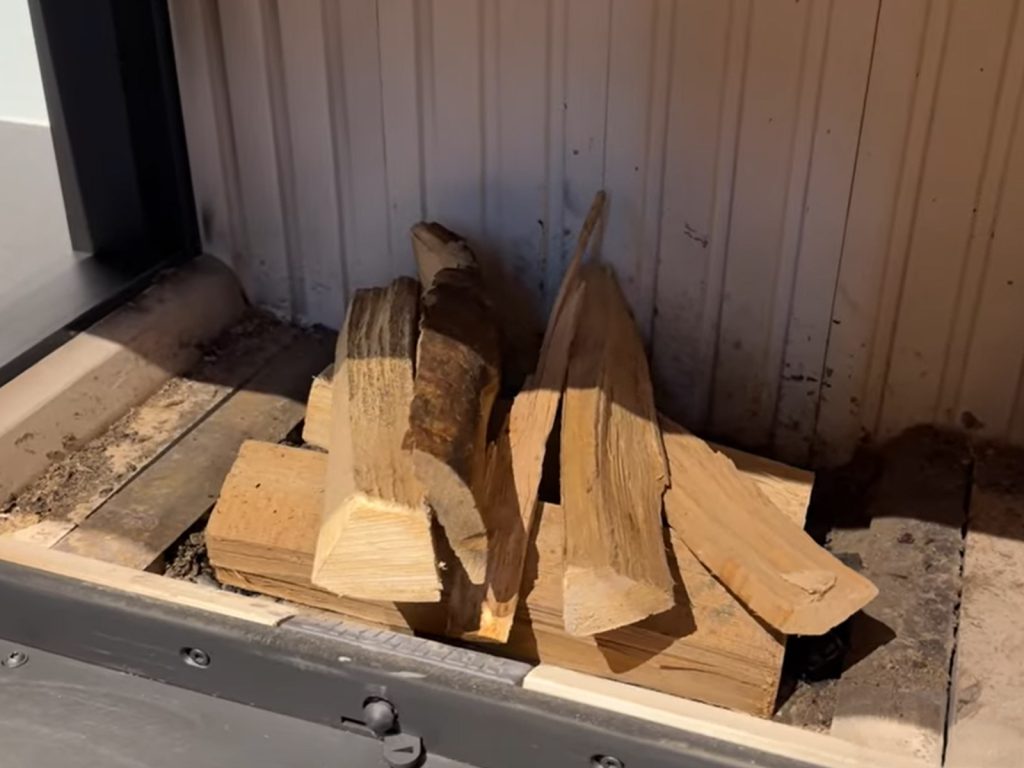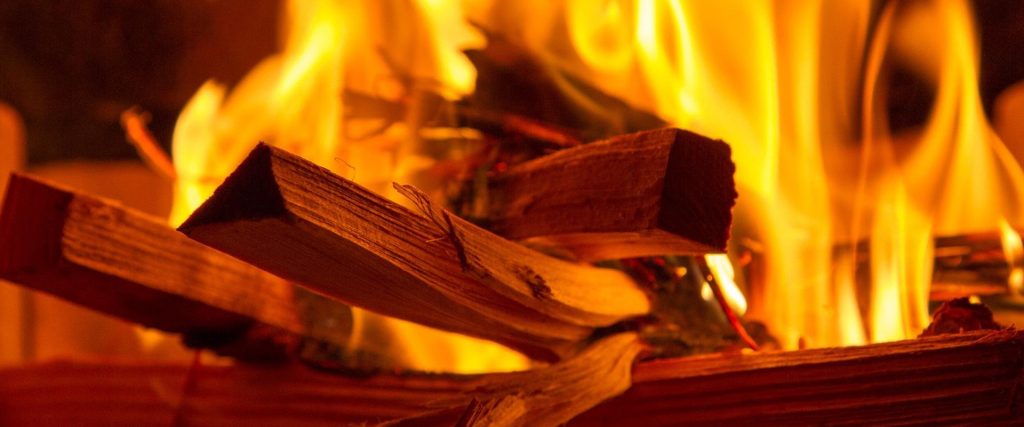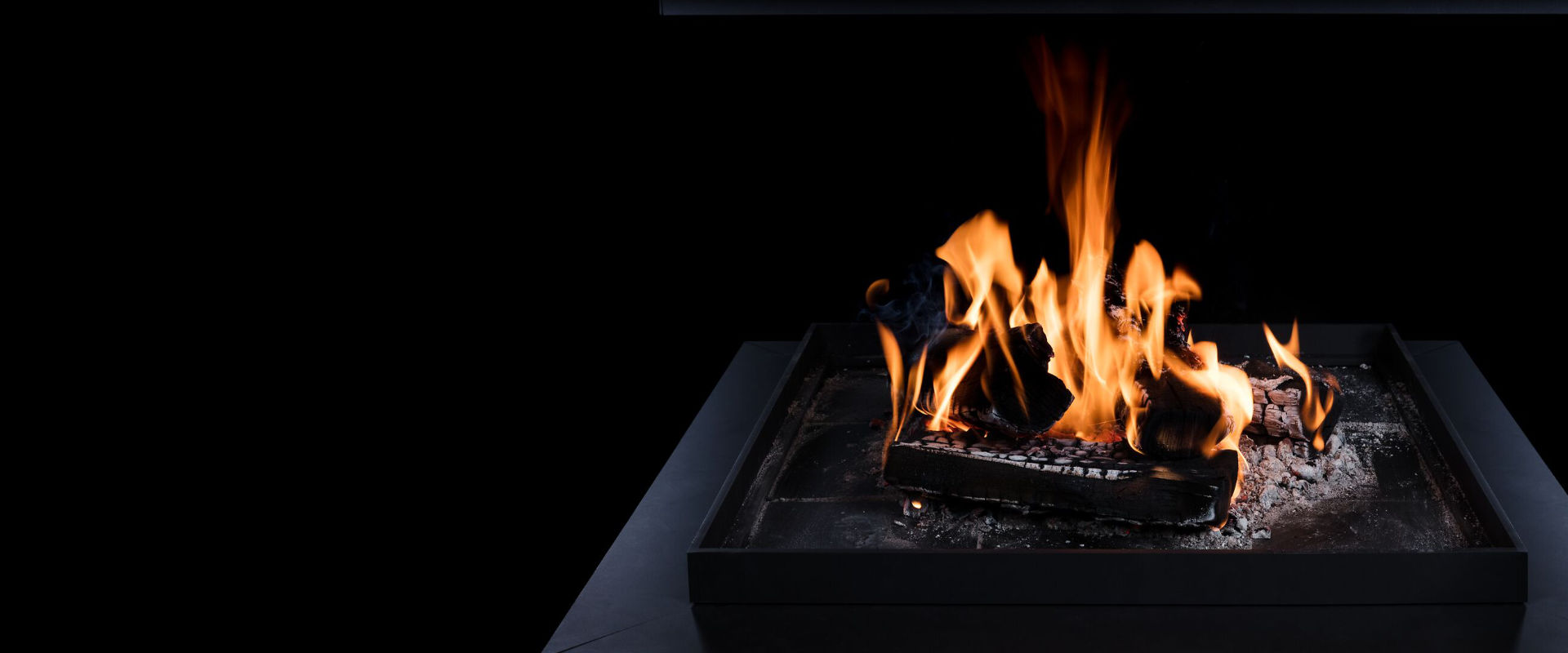Before heating comes preparation
A clean and well-maintained fireplace or stove is essential for low-emission heating. The chimney must also be suitable for the system. For this reason, every installed unit is regularly inspected by a chimney sweep.
In general, there are two ways to light a fire: top-down and bottom-up. Each method is suited to specific types of combustion systems. Top-down lighting is recommended for systems without a grate, while bottom-up lighting should be used when a floor grate is present.
For proper lighting, you need:
- Natural fire starters such as the Fidibus from Brunner
- Logs with a circumference of less than 20 cm
Caution: Never use flammable liquids such as kerosene or alcohol (risk of explosion), plastics of any kind, waste, scrap wood, treated wood, plywood, fiberboard, glued wood, bark briquettes or particleboard. Painted, coated or varnished wood must also never be used.
Lighting correctly with environmental awareness
Proper lighting helps ensure environmentally friendly heating, quick heat generation and long-lasting warmth.
Lighting from above for systems without a grate:
- Place two or three logs side by side on the bottom of the firebox, leaving small gaps between them (the split edges should face upward).
- Arrange kindling crosswise on top of the logs.
- Place Fidibus fire starters from Brunner between the kindling at a distance of 3 cm to 5 cm.
- Adjust the air slider according to the operating instructions.
- Make sure that the dampers and shut-off valves are open.
- Light the fire starters and close the firebox door.

Lighting from below with a floor grate:
- Place kindling on the open floor grate.
- Position the fire starters between the kindling.
- Stack additional layers of kindling on top.
- Place two to three thinner logs on top of the kindling (with the split edge facing down).
- Adjust the air slider according to the operating instructions.
- Check that the dampers and air valves are open.
- Light the fire starters and close the firebox door.
Proper reloading
When heating correctly, the air supply is reduced once the flames have fully ignited the wood. Add more wood only when a bed of embers has formed. To continue heating, place new logs on the embers. Wood briquettes can also be used if desired.
Before adding new wood, the embers should be pushed together into a compact bed. To achieve a quick ignition of the new logs, open the air slider further. This is the point at which the air supply should then be reduced to normal operation. For some models, additional settings on the floor grate may be required – these can be found in the operating instructions.
Note: The heating process can be repeated as often as desired. The amount of fuel varies depending on the appliance. For proper operation, it is best to follow the quantity approved and tested by the manufacturer.
To end the heating process, stop adding wood and close the air supply once the remaining embers have cooled. This prevents the room from cooling down too quickly.

Proper wood storage
When heating with wood, both the type of wood and the way it is stored determine how well it burns in the fireplace. For centuries, people have stacked firewood in a way that saves space. The height of the stack depends on the shape and size of the logs.
Proper storage means keeping the wood dry and well-ventilated. Damp wood burns poorly, gives off little heat, and produces a lot of smoke. The drier the wood, the higher its heating value. During inspections, chimney sweeps usually measure the moisture content of the wood using a wood moisture meter.

Ideal storage locations are dry, covered, and well-ventilated shelters with a protected floor that prevents ground moisture from rising. The perfect storage place is therefore a shed – as long as the wood is already well dried. If the wood is still damp, it should be stored outdoors, where drying happens faster. Enclosed spaces such as basements or stacks wrapped in plastic are not suitable.
In Germany, under favorable storage conditions, it is usually sufficient to let the wood dry for one summer. During this time, the moisture content typically drops below 20%.
How to store wood correctly:
- Store the wood preferably along a wall, for example a house wall. Keep a distance of about 10 cm to allow air circulation. This helps the wood dry faster.
- Stack the logs in a way that allows the wind to pass through. Use thin branches or poles laid crosswise as a base to keep the wood off the ground and away from soil moisture.
For more details, see our article “Properly storing firewood supplies.”
These types of wood are suitable as firewood
Choosing the right type of wood is crucial for achieving good heating performance. Characteristics such as spark formation, flame color, and scent often influence the choice of firewood.
Suitable types include:
- Beech (highest heating value)
- Maple
- Cherry
- Ash
- Hornbeam (though difficult to split)
Softwoods like alder, poplar, and willow are less suitable, as they leave a high amount of ash. Coniferous woods such as larch, pine, or spruce are not ideal for open fireplaces because they produce many sparks. However, using an appropriate spark guard can help reduce this issue.
Conclusion
Lighting a wood fire the right way takes a bit of skill. Not only the proper technique but also the right fuel are essential for a successful start. There is a wide variety of firewood to choose from, and the heating value, spark formation, flame color, and scent can all be influenced by the type of wood you select.
Expert advice
The Fidibus from Brunner is an ideal fire starter. It is made from pure wood fibers with natural paraffin, is odorless, does not dry out, and is completely harmless to health.





